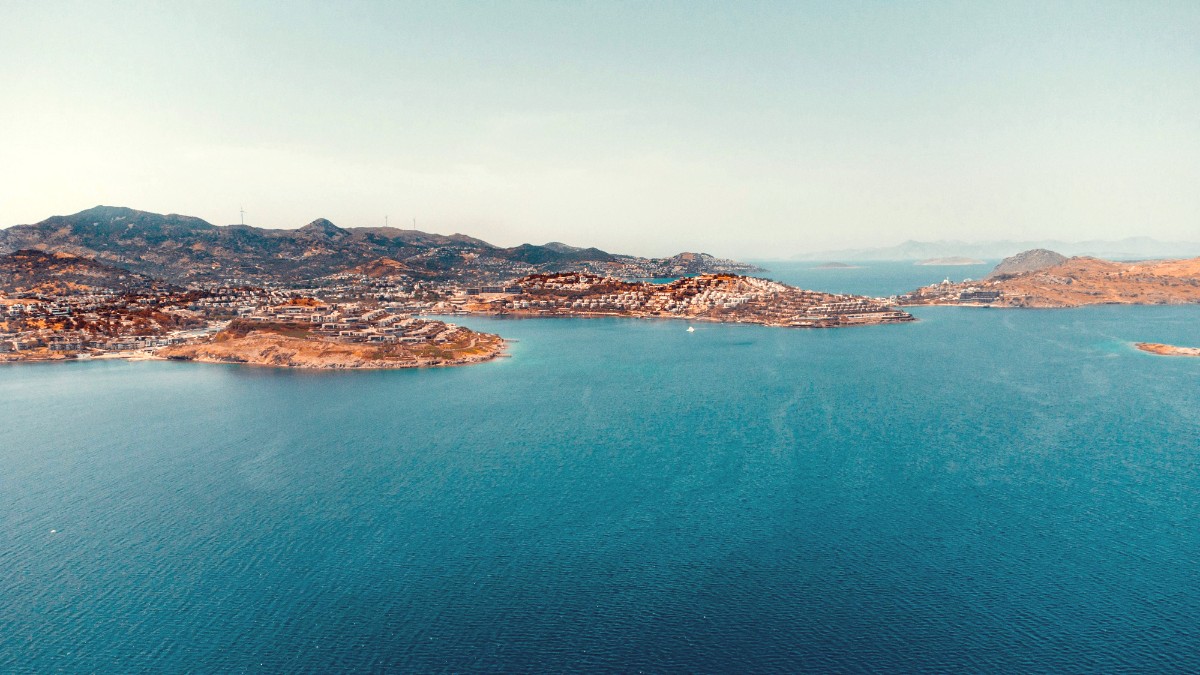
Aegean Coast, Turkey
The city faces the Greek island of Kos, about 12 nautical miles (22 km) across the water. This proximity to Greece shapes local culture, architecture, and some cuisine. Bodrum's irregular coastline forms numerous natural harbors and coves for boats and secluded swimming spots. These features position Bodrum as a hub for yachting and maritime activities. The terrain shifts from flat coastal plains near the city center to rugged, hilly areas inland and along the peninsula's edges. This varied landscape caters to leisurely beach days and active pursuits like hiking.
Bodrum offers a popular mix of historical sites, beaches, and a lively atmosphere. Its status as a well-developed tourist destination means modern amenities alongside historical charm. The city offers various services for a comfortable visit.
Bodrum is situated on the southern coast of the Bodrum Peninsula, which extends into the Aegean Sea. This strategic location gives Bodrum a distinct coastal character, with many small islands and bays dotting its surrounding waters. The city faces the Greek island of Kos, approximately 12 nautical miles (22 km) across the water. The coastline around Bodrum is irregular, forming numerous natural harbors and coves that provide shelter for boats and offer secluded swimming spots. These geographical features position Bodrum as a hub for yachting and maritime activities.
The terrain varies from flat coastal plains near the city center to more rugged, hilly areas further inland and along the peninsula's edges. This varied landscape supports both leisurely beach days and more active pursuits like hiking. The combination of historical sites, beautiful beaches, and a lively atmosphere distinguishes Bodrum as a popular destination.
The city stands on the ancient ruins of Halicarnassus, once the capital of Caria.
Halicarnassus was the site of the Mausoleum, one of the Seven Wonders of the Ancient World.
The Knights Hospitaller began building Bodrum Castle in 1402, using stones from the Mausoleum ruins.
After the Ottoman conquest, the castle served as a prison and later fell into disrepair.
Today, Bodrum Castle hosts this museum, preserving artifacts from ancient shipwrecks.
Bodrum faces the Greek island of Kos, approximately 12 nautical miles (22 km) across the water. This close geographical connection to Greece influences local culture, architecture, and even cuisine in some aspects. The city's coastal features and proximity to nearby islands contribute to its maritime character.
The coastline around Bodrum is irregular, forming numerous natural harbors and coves. These provide shelter for boats and offer secluded swimming spots. These geographical features make Bodrum a center for yachting and various maritime activities.
The terrain of the Bodrum Peninsula varies. It ranges from flat coastal plains near the city center to more rugged, hilly areas further inland and along the peninsula's edges. This diverse landscape supports both relaxed beach days and more active pursuits like hiking.
Bodrum's distinct coastal character and varied landscape offer diverse experiences for visitors.
A snapshot of Bodrum's current characteristics provides a clear picture for potential visitors. It functions as a popular destination for its blend of historical sites, beautiful beaches, and lively atmosphere.
Bodrum's status as a well-developed tourist destination means modern amenities exist alongside historical charm. The city provides a range of services for a comfortable visit.
Bodrum is on the southwestern Aegean coast of Turkey, within the Muğla Province.
The Bodrum District holds approximately 198,000 residents, a number that rises during peak season. Tourism is the dominant industry.
Turkey observes Türkiye Time (TRT), UTC+3. Electricity uses 220-240 volts at 50 Hz, with Type C and F plugs.
The electrical supply in Bodrum, and throughout Turkey, uses 220-240 volts at a frequency of 50 Hz. You will find Type C (two round pins) and Type F (two round pins with two earth clips) plugs.